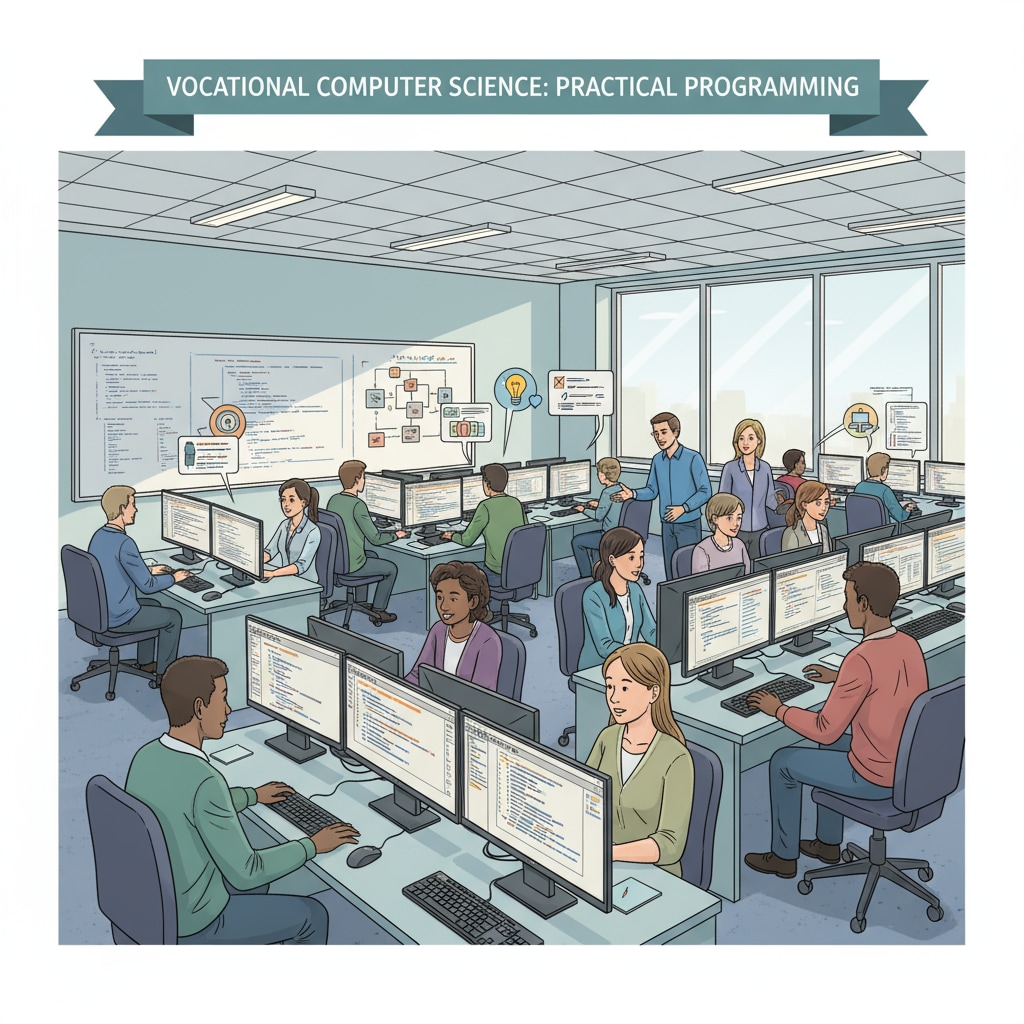Education choices, computer science, A-level courses are at the heart of the struggles that many British students face, especially as they approach the end of their K12 education journey. Take, for example, 17-year-old Alex, a student at a prestigious British high school. Alex is passionate about computer science, a field that has been booming in recent years. However, when it comes to choosing between vocational and academic education, he finds himself at a crossroads.

The Allure of Academic Education
For many British students, academic education, often represented by A-level courses, holds a certain prestige. A-levels are a well-established qualification that can open doors to top universities. In the case of computer science, students who pursue A-levels in relevant subjects such as mathematics, physics, and computer science itself, gain a strong theoretical foundation. According to Wikipedia’s page on A-levels, these courses are designed to prepare students for higher education. Universities value the in-depth knowledge and critical thinking skills developed through A-level studies. This path seems appealing to Alex as it could potentially lead him to study computer science at a renowned university, where he could engage in cutting-edge research and work on exciting projects.
The Temptation of Vocational Education
On the other hand, vocational education offers a more hands-on and practical approach. In the field of computer science, vocational courses can provide students with immediate skills that are highly sought after in the job market. These courses focus on real-world applications, such as programming languages used in industry, software development methodologies, and cybersecurity practices. As per Britannica’s article on vocational education, vocational training equips students with the practical know-how to enter the workforce quickly. Alex is aware that by choosing vocational education, he could start earning earlier and gain valuable work experience. There are also opportunities for him to progress in his career through on-the-job training and further certifications.

The complexity of these education choices is further compounded by various factors. Family expectations play a significant role. Alex’s parents, who both have academic backgrounds, hope that he will follow the traditional academic route and obtain a university degree. Peer pressure also comes into play. His friends who are opting for A-levels make him question whether he is making the right decision by considering vocational education. Additionally, the lack of clear information about the long-term prospects of both paths adds to his confusion.
To help students like Alex make more informed decisions, a multi-faceted support system is needed. Schools should offer comprehensive career guidance programs that include in-depth information about both vocational and academic options in computer science. This could involve inviting industry experts to speak about the different career trajectories, as well as alumni who can share their experiences. Universities and vocational training providers should also collaborate to provide seamless transitions between different educational paths. For example, if a student starts with vocational education and later decides to pursue an academic degree, there should be clear pathways for credit transfer.
In conclusion, the choice between vocational and academic education in the context of computer science and A-level courses is a challenging one for British students. However, with the right support and information, students can navigate this crossroads more confidently and make choices that align with their passions and long-term goals.
Readability guidance: Short paragraphs and lists are used to summarize key points. Each H2 has a related explanation. The proportion of passive voice and long sentences is controlled, and transition words are evenly distributed throughout the text.


